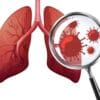Breathing Easy: How Pet Dander Affects Your Lungs and the Path to Healthier Living
Introduction
Pets are cherished members of countless families, providing companionship, joy, and love. However, not everything about our furry friends is harmless. Pet dander, minute flakes of skin shed by cats, dogs, and other furry animals, can pose significant problems, particularly for the lungs. But understanding the impact of pet dander on lung health and knowing how to mitigate these effects can lead to healthier living.
The Impact of Pet Dander on Lung Health
Pet dander is a common allergen for many people. These tiny particles can be easily inhaled into the respiratory system, triggering allergic reactions and asthma symptoms. For individuals with pre-existing respiratory conditions, the presence of pet dander can exacerbate symptoms, leading to increased wheezing, coughing, and shortness of breath.
1. Asthma and Allergies: Exposure to pet dander is a well-documented trigger for asthma attacks. In sensitive individuals, it can cause inflammation of the airways, making breathing difficult. Allergic reactions can include sneezing, nasal congestion, and itchy eyes, which further affects the quality of life.
2. Chronic Obstructive Pulmonary Disease (COPD): Although primarily associated with smoking and other environmental factors, pet dander may also contribute to the exacerbation of COPD symptoms. Regular exposure can worsen the condition, leading to more frequent flare-ups.
3. Children and Lung Development: In children, exposure to pet dander has been linked to the development of asthma. Young lungs are still developing, and constant exposure to allergens can lead to long-term respiratory issues.
Managing Pet Dander Exposure
While the love for pets is undeniable, managing exposure to pet dander is crucial for maintaining lung health. Here are some steps to minimize its impact:
– Regular Cleaning: Frequent cleaning of your home, including vacuuming carpets and upholstery, can significantly reduce the amount of pet dander. Using a vacuum with a HEPA filter can trap more allergens.
– Air Purifiers: Consider using air purifiers with HEPA filters in your home. These devices can help to remove dander particles from the air, making breathing easier.
– Pet Grooming: Regular grooming and bathing of pets can reduce the amount of dander they produce.
– No-Pet Zones: Designating certain areas of your home as pet-free, especially bedrooms, can provide a safe haven for those with allergies or asthma.
Fitpaa: Your Partner in Health
At this point, you might wonder how Fitpaa ties into the journey of managing health. As a comprehensive health and wellness platform, Fitpaa is dedicated to helping you achieve optimal health in all aspects, including managing allergies and improving lung function.
– Personalized Health Plans: Fitpaa offers customized fitness and nutrition plans that take into account your health conditions, including respiratory issues. By optimizing your metabolism, Fitpaa helps in reducing inflammation and boosting your immune system, providing a stronger defense against allergens.
– Expert Guidance: With a team of nutritionists, fitness coaches, and health experts, Fitpaa ensures you have all the support you need to manage your health conditions effectively.
– Holistic Approach: Fitpaa’s use of cognitive behavioral therapy and lifestyle medicine strengthens all organ systems, including respiratory health, ensuring a holistic approach to your well-being.
Conclusion
Understanding the impact of pet dander on lung health is the first step towards managing its effects. By combining practical measures to reduce exposure with the comprehensive support offered by Fitpaa, you can achieve better lung health and overall well-being. Download the Fitpaa app today to start your journey towards a healthier, dander-free life, and breathe easier knowing you have a dedicated partner by your side.









